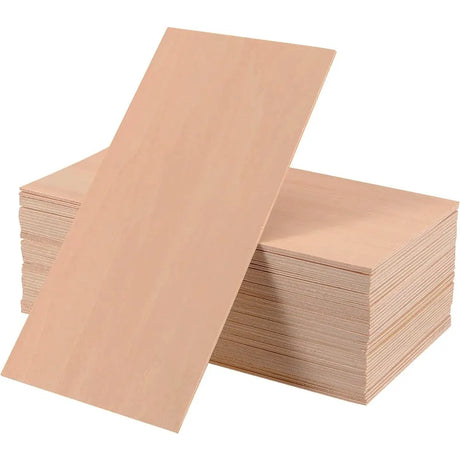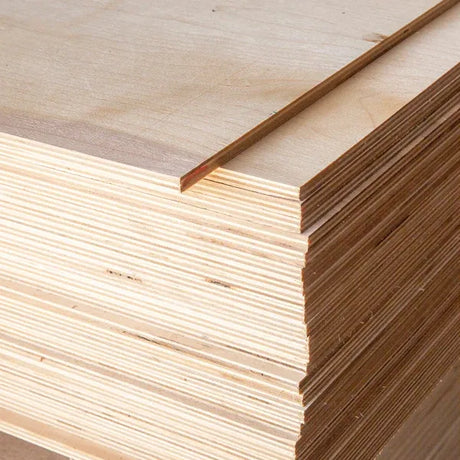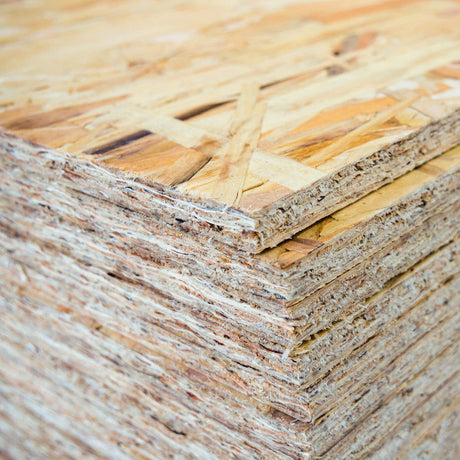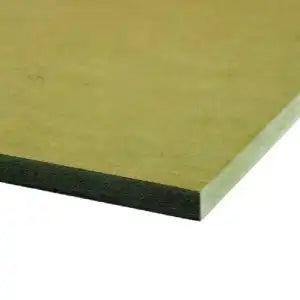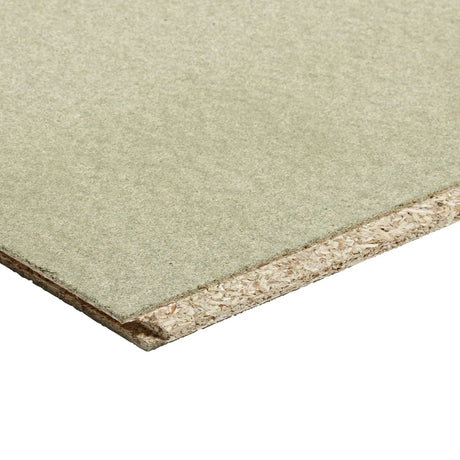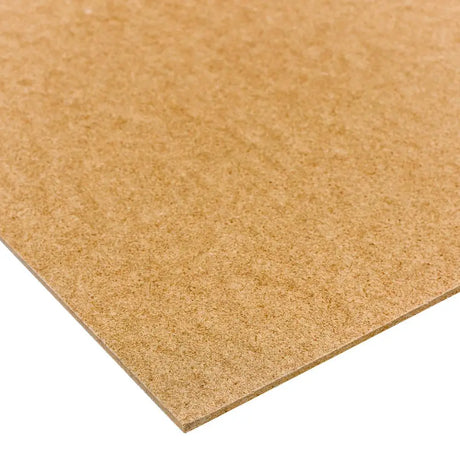Oriented Strand Board (OSB)
OSB is an engineered wood panel made from compressed wood strands arranged in specific orientations to enhance strength and durability:
- OSB3 Structural Board - Available in 11mm and 18mm thicknesses in standard 2400mm x 1220mm sheets
- OSB3 Tongue & Groove Flooring Board - 18mm thick T&G boards designed for easy installation in flooring applications (2400mm x 625mm)
- Superior Strength - Stronger and more durable than chipboard, with excellent load-bearing capacity
These versatile boards are ideal for structural applications including flooring, roofing, sheathing, and shed construction. The strategically placed strands create greater overlap, resulting in a stronger and sturdier board compared to chipboard.
Plywood Options
Our extensive plywood range includes varieties suitable for different applications, from general-purpose to specialist uses:
Structural Hardwood Plywood
- Multiple Thicknesses - Available in 9mm, 12mm, 18mm, and 25mm options
- Poplar Core Construction - Provides excellent stability and strength
- Standard Sheet Size - 1220mm x 2440mm for easy planning
- Structural Grade - Engineered for load-bearing applications
Softwood Shuttering Plywood
- Formwork Specialist - Designed specifically for concrete shuttering applications
- Various Thicknesses - Available in 9mm, 12mm, and 18mm options
- Standard Sheet Size - 1220mm x 2440mm
- Durable Construction - Built to withstand the pressures of concrete pouring
General Purpose Plywood
- Lighter Applications - Perfect for non-structural and decorative uses
- Thinner Options - Available in 3.6mm and 5.5mm thicknesses
- Poplar Core - Provides good stability while keeping weight down
- Versatile Usage - Suitable for furniture backing, lining, and craft projects
Our plywood products offer excellent strength-to-weight ratios, making them suitable for both structural applications and decorative projects.
Chipboard Flooring
Our moisture-resistant tongue and groove chipboard flooring provides a solid base for various flooring applications:
- T&G Design - Interlocking edges for secure, level flooring installation
- Moisture Resistance - Specifically treated to resist moisture, making it suitable for kitchens, bathrooms, and other areas with higher humidity
- Size Options - Standard 2400mm x 600mm boards
- Thickness Choices - Available in 18mm and 22mm options to suit different applications
The tongue and groove design ensures a smooth, stable floor surface while reducing squeaking and movement between boards.
MDF Board
Medium Density Fibreboard (MDF) offers excellent versatility for a wide range of indoor applications:
- Multiple Thicknesses - Available in 6mm, 9mm, 12mm, 18mm, and 25mm options
- Standard Sheet Size - 2440mm x 1220mm
- Smooth Surface Finish - Perfect for painting, veneering, or laminating
- Consistent Density - No knots or grain patterns to work around
MDF is ideal for furniture making, shelving, built-in wardrobes, decorative wall panelling, and countless other interior projects where a smooth, stable surface is required.
Hardboard
Our standard hardboard provides an economical solution for furniture backing and other thin sheet applications:
- Furniture Backing - Perfect for cabinet and wardrobe backing
- Standard Size - 2440mm x 1220mm (8ft x 4ft)
- 3.2mm Thickness - Thin profile ideal for backing applications
- Versatile Usage - Also suitable for craft projects, templates, and pinboards
This economical sheet material offers good durability while keeping costs down for non-structural applications.
Why Choose DIY Building Supplies for Your Sheet Materials?
Quality Assurance
We select sheet materials from reputable manufacturers, ensuring consistent quality across our entire range. Each board meets relevant industry standards for performance and safety, giving you confidence in your projects.
Expert Guidance
Our knowledgeable team brings years of practical experience to help you select the right sheet materials for your specific requirements. Whether you're unsure about which type of board to use or calculating quantities, we're just a phone call or email away with expert advice.
Nationwide Delivery
We ship our complete range of sheet materials across mainland UK, using specialized packaging and handling to ensure your boards arrive in perfect condition. Our logistics partners are experienced in transporting sheet materials safely and efficiently.
Competitive Pricing
By building direct relationships with manufacturers and operating efficiently, we offer trade-quality sheet materials at competitive prices. Our online model keeps overheads low, allowing us to pass savings directly to you without compromising on quality.
Frequently Asked Questions
What's the difference between OSB and plywood?
OSB (Oriented Strand Board) is made from compressed wood strands arranged in layers for strength. It’s typically more affordable than plywood and offers consistent performance without weak spots like knots. However, it can swell if exposed to moisture for long periods.
Plywood is made from thin layers of wood veneer with alternating grain directions for added strength. It often has a smoother finish and is available in decorative options, so it is ideal where appearance matters. Plywood also resists warping better and holds up well against moisture, especially marine-grade types.
Which sheet material is best for flooring?
For most domestic flooring, 18mm or 22mm tongue & groove chipboard is a reliable and cost-effective option. It's easy to install and strong enough for everyday use, with the 22mm thickness offering extra support for heavier traffic areas. OSB3 T&G boards (18mm) are a great alternative, providing solid load-bearing strength and a simple fit thanks to their interlocking edges.
For high-traffic or moisture-prone areas like kitchens, bathrooms, or utility rooms, structural plywood (18mm or 25mm) is the best choice. However, regardless of the material you use, always opt for moisture-resistant variants in these areas.
How do I calculate how many sheets I need?
To calculate how many sheets you need, start by measuring the total area in square metres (length × width). Then, work out the area of one sheet. For example, a standard 2440mm × 1220mm board covers 2.98m². Divide your total area by the sheet area to get the number of sheets.
It's best to add around 10% extra to account for wastage to help avoid delays if you make a mistake or need to trim boards to fit. For tongue and groove flooring or non-standard sizes, always calculate using the actual coverage per board.
How should I store sheet materials?
Proper storage helps maintain the shape and performance of your materials. Sheet materials should always be stored flat on a level surface to prevent warping or bowing. Use bearers to elevate the sheets off the ground, spacing them evenly at about 600mm apart and heavy sheets should go at the bottom of the stack, with lighter ones on top.
Keep the materials in a dry, covered area away from direct sunlight and rain. To protect from dust, cover them with a breathable material. Before installation, allow the sheets to acclimatise to the environment for 48 to 72 hours.
Can I cut sheet materials myself?
Yes, you can cut sheet materials yourself using the right tools. A sharp circular saw works well for straight cuts, and a jigsaw is good for curves. If you’re unsure or need accurate cuts, many builders' merchants (including some of our partners) offer cutting services.

